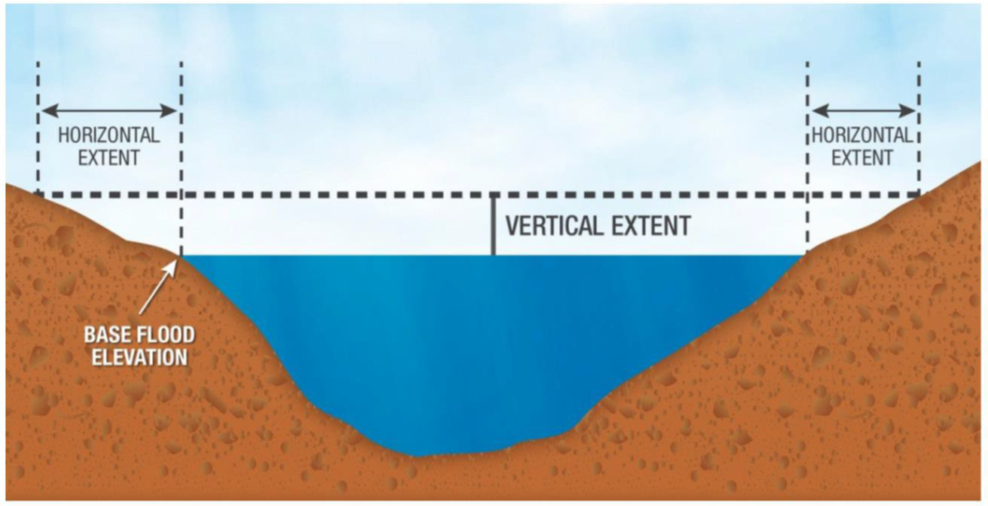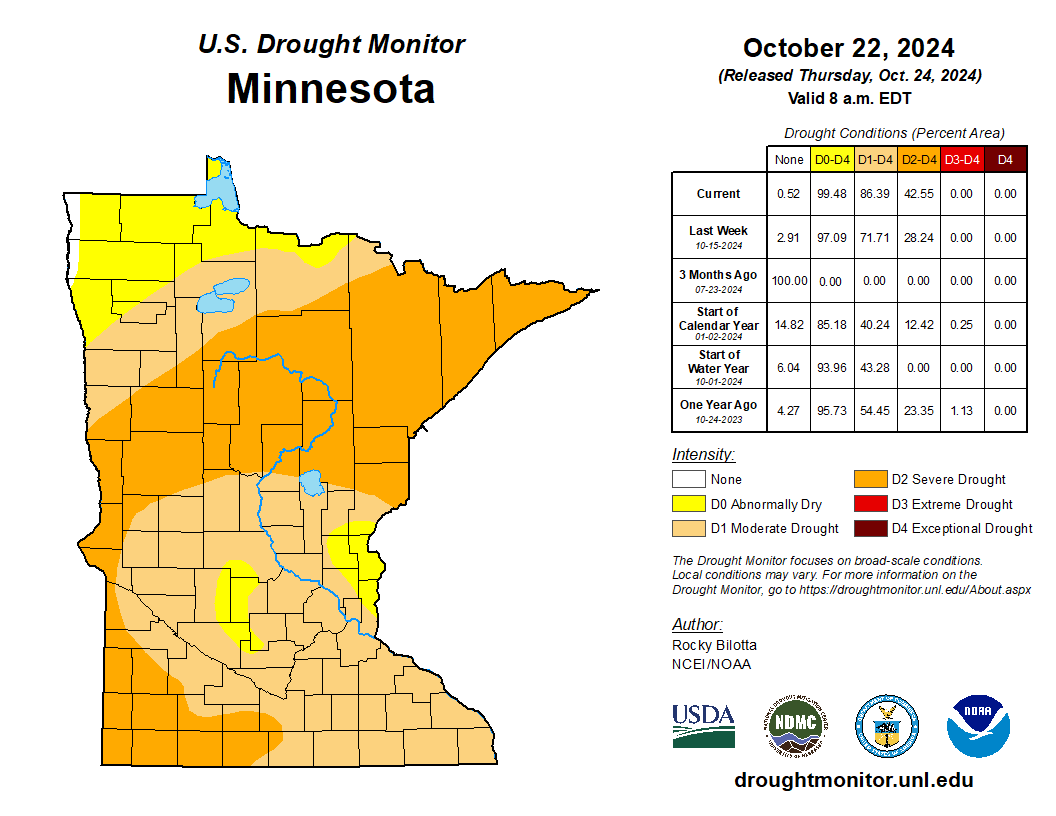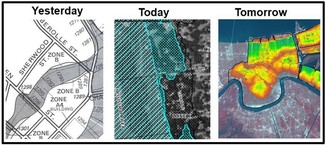
The Minnesota Research Reader is an interdisciplinary collaboration between DNR and USDA Forest Service. Each issue has a topical theme, highlighting four articles and their management implications.
The most recent issue includes articles related to flooding and extreme precipitation, of likely interest for many of our readers. See September 2024: Volume 15 Flooding and Extreme Precipitation.
|
Learn more about the Minnesota Research Reader
- Minnesota Research Reader website
- Sign up for the Minnesota Research Reader just below the "About the Minnesota Research Reader" section on the website, or at the bottom of the latest issue.
- If questions, contact Pooja Kanwar, DNR water policy consultant.
By Dan Petrik, DNR Shoreland and Rivers Program manager

With changes to state law establishing a regulatory framework for a new cannabis industry, many local governments have been considering and preparing changes to local zoning regulations. In considering these changes, local governments should ensure they are consistent with local shoreland and river-related zoning ordinances.
Types of cannabis land uses
The cannabis industry is composed of businesses in a variety of land uses including industrial (manufacturing), commercial (retail) and agriculture, among others. Cannabis businesses should be treated the same as any other business based on its land use. Local governments should make land use classification decisions for cannabis businesses consistent with the zoning guidance in Table 1 of the “Guide for Local Governments on Adult-Use Cannabis,” prepared by the Office of Cannabis Management. If cannabis businesses are classified consistent with this guidance, the land use categories and related regulations in shoreland and river-related ordinances are adequate and apply.
However, local governments may choose to amend zoning ordinances, including shoreland and river-related ordinances, to add time, place and manner regulations for cannabis businesses. The DNR will only review proposed amendments to ensure that specific cannabis uses are classified consistent with the guidance and that the method for regulating uses in the shoreland and river-related regulations - as permitted, conditional or prohibited - is not less restrictive. The DNR will also review to ensure that cannabis specific regulations do not conflict with shoreland or river-related rules.
|
Communities will need to review uses allowed in their shoreland and river-related districts
For example, cannabis manufacturing and processing businesses are industrial uses which are allowed as a conditional use in most shoreland areas but not all. Industrial uses, and thus cannabis manufacturing facilities, are prohibited in the shoreland of natural environment lakes and in the shoreland of Remote, Transition and Agricultural rivers. In the Wild and Scenic River and Lower St. Croix Riverway districts, industrial uses and most commercial uses are prohibited, including cannabis manufacturing facilities and retail stores. However, outdoor hemp cultivation is classified as an agricultural use in the guidance and therefore is an allowed use under all shoreland and river-related ordinances. Local governments may always be more restrictive in how they regulate land uses in shoreland and river-related districts.
The statements in this article do not have the force and effect of law. This article is informational only and should not be interpreted as creating new criteria or requirements beyond what is already established in the relevant statutes and rules. Whether a local shoreland ordinance complies with the relevant statutes and rules will be determined on a case-by-case basis. Nothing in this article should be considered legal advice. Local governments should consult their attorney for specific advice in adopting, amending and administering ordinances.
By Ceil Strauss, DNR state floodplain manager

Federal Emergency Management Agency's (FEMA) Federal Flood Risk Management Standard (FFRMS) rules became effective Sept. 9, 2024.
What are the Federal Flood Risk Management Standard (FFRMS)? At first glance, the FFRMS appears to be an elevation standard, but it is actually a resilience standard and amends longstanding floodplain management Executive Order 11988.
- Nature-based solutions are required to be considered as part of the eight-step floodplain review process.
- Flood risk minimization should also be considered to mitigate future flood damage, including locating a project outside of the FFRMS floodplain, structure elevation, or dry floodproofing when appropriate.
- The FFRMS requires designs for new construction and repair of substantially damaged buildings/facilities to be based on Climate-Informed Science, the 0.2% annual chance flood elevation, or 2-3 feet of freeboard.
When do FEMA FFRMS rules apply? FEMA FFRMS policy applies to federally funded actions or projects - for both buildings and facilities - involving new construction, repair of substantial damage, and substantial improvement actions that are located in the FFRMS floodplain. The FEMA programs included in the FFRMS are Public Assistance, Individual Assistance (direct housing activities only), and Hazard Mitigation Assistance. FFRMS policies apply to federally declared disasters and FEMA grants with Notice of Funding Opportunities (NOFOs) on or after Sept. 9, 2024.
Where do FEMA FFRMS rules apply? Within the FFRMS floodplain.
What is the FFRMS floodplain? The FFRMS floodplain includes the Special Flood Hazard Area, plus the horizontal extension of the floodplain based, on either a three-foot freeboard or 0.2% annual chance flood elevation, whichever is higher (for critical facilities) or a two-foot freeboard or 0.2% annual chance flood elevation, whichever is lower (for non-critical facilities).
|

FFRMS Floodplain: The Federal Flood Risk Management Standard floodplain includes the Special Flood Hazard Area, which is the area covered at the Base Flood Elevation ("100-year" flood elevation), PLUS the additional expanded horizontal extent covered when two feet of freeboard (or three feet of freeboard for critical facilities) is added to the Base Flood Elevation.
What does this mean for buildings?
-
Critical actions buildings: The lowest floor elevation, or floodproofing where applicable, must be three feet above the Base Flood Elevation (the "100-year" flood elevation) or above the 0.2% annual chance elevation (the "500-year") flood elevation), whichever is higher.
-
Non-critical actions buildings: The lowest floor elevation, or floodproofing where applicable, must be two feet above the Base Flood Elevation (the "100-year" flood elevation) or above the 0.2% annual chance elevation (the "500-year") flood elevation, whichever is lower.
What are critical actions? An activity or action for which even a slight risk of flooding is too great. Examples include structures that store highly volatile, flammable, explosive, toxic or water reactive materials; hospitals and nursing homes, and housing for the elderly; emergency operation centers or data storage centers; power generating plants and other principal points of utility lines.
What does this mean for repair/replacement of culverts? The FFRMS applies to "facilities," which includes culverts and culvert crossings. If work to repair a culvert or culvert crossing costs more than 50% of the cost of replacing the culvert or culvert crossing, it is "substantially damaged." When replacing a substantially damaged culvert or culvert crossing, the requirements include:
- Considering natural features and nature-based solutions.
- Designing the replacement "to adapt to, withstand and rapidly recover from a flood event." Note: For culverts that were damaged due to being undersized, or improperly sized, this means that to the extent practicable and in accordance with applicable grant program requirements, projects located within a FFRMS floodplain must be designed to ensure resilience against flooding up to the flood elevation of the FFRMS floodplain..
Who should you contact if you have FFRMS questions? Each FEMA Region has a FFRMS Specialist in the Floodplain Management and Insurance Branch. Please email FEMA Region 5 FFRMS Specialist Brian Killen with you questions or training requests.
FEMA FFRMS Resources
More about the Federal Flood Risk Management Standards (FFRMS)

Back by popular demand!
A series of FREE one-hour virtual trainings on floodplain management topics are being offered January through March 2025. The timing will be similar to our Winter 2023 and 2024 series, with most trainings offered 1-2 p.m. on Mondays, and 9:30-10:30 a.m. on Wednesdays.
Use the "Register" link next to each training to sign up.
You'll also be able to find the registration links and more details about each training on the DNR 2025 Shoreland and Floodplain Upcoming Live Training page, or via the link at the top of the DNR Shoreland and Floodplain Education and Training Center.
Upcoming dates and topics:
|
-
1/6/2025 (Mon), 1-2 p.m.: Floodplain Management Basics Register
-
1/8/2025 (Wed), 9:30-10:30 a.m.: Floodplain Administration 101 Register
-
1/13/2025 (Mon), 1-2 p.m.: FEMA Map Basics (including Letters of Map Change) Register
|
|
 |
-
1/22/2025 (Wed), 9:30-10:30 a.m.: *Accessory Structures in the Floodplain Register (*New topic)
-
1/27/2025 (Mon), 1-2 p.m.: Floodplain Web-Based Maps and Tools Register
-
2/3/2025 (Mon), 1-2 p.m.: Dealing with Zone A Floodplains Register
|
|
|
|
 |
-
2/5/2025 (Wed), 9:30-10:30 a.m.: FEMA Flood Insurance Basics Register
-
2/10/2025 (Mon), 1-2 p.m.: Floodplain Administration 201 (CUPs, floodproofing, etc.) Register
|
|
 |
-
2/12/2025 (Wed), 9:30-10:30 a.m.: Floodplain and Watershed Higher Standards Register
-
3/10/2024 (Mon), 1-2 p.m.: Post-flood Responsibilities and Substantial Damage Determinations Register
|
|
|
|
 |
Remember: Recordings of past virtual training available
To see recordings of the one-hour virtual trainings presented in recent years, and other newer on-demand virtual trainings, go to the Shoreland and river-related training page or Floodplain training page.
After one of the warmest and driest Septembers on record, continued dry weather is causing expanded drought conditions in Minnesota. This end of season update highlights current drought conditions.
Severe drought is now extended over much of northeastern Minnesota and a small portion of southwestern Minnesota, and moderate drought has expanded in much of the state over the past two weeks. Four basins have been moved to the warning phase, and eight basins remain in the watch phase. The five-day precipitation forecast indicates totals ranging from 0.01 to 0.25 inches of precipitation over the southern two-thirds of the state, and slightly higher totals in the northeast. The DNR continues to carefully monitor the situation.

Key Observations
- The weekly U.S. Drought Monitor map released Thursday, October 24 shows:
o 13% of Minnesota is experiencing abnormally dry conditions.
o 44% of Minnesota is in moderate drought (D1), up 1% from last week.
o 43% of Minnesota is in severe drought (D2), up from 28% last week
- In accordance with the state drought plan, four river basins are now in the Drought Warning phase.
- Eight river basins remain in the Drought Watch phase, per the state drought plan.
For more information

Are you interested in joining the DNR Ecological and Water Resources Division? The division is looking to fill a Floodplain Engineer position in our floodplain and shoreland management programs.
The position will be part of a dedicated team that works with FEMA to create and update quality floodplain models and maps that help Minnesotans understand flood risk. Job duties will include a mix of hydrology and hydraulics modeling, GIS tasks and database management, in addition to outreach to local communities during the mapping update process.
To apply, go to https://mn.gov/mmb/careers/ and search for Job ID 78327 or “Floodplain Engineer.”
This posting was reopened Oct. 23, 2024, and the closing date is Nov. 21, 2024.
|
FEMA Region 5 staff (based in Chicago) are continuing their monthly one-hour virtual training series in 2024. They are free!
It's not too late to register for many training topics!
Upcoming "Managing your Community's Floodplain" monthly series dates and topics:

Note: All held 9-10 a.m. Central Time.
-
Nov. 27, 2024: Natural and Beneficial Functions; Register
-
Dec. 18, 2024: Community Rating System; Register
-
2025 virtual trainings will continue to be 9-10 a.m. on the last Wednesday of the month. Topics and registrations will be available soon.
These trainings and registration links are also available on the DNR Floodplain Training and Education page.
|

Got questions about the Federal Flood Risk Management Standard or some other state or federal requirement? Have a tricky floodplain management situation?
Talk with FEMA and DNR Floodplain Program representatives during monthly virtual Minnesota Floodplain Management Office Hours. Hours are 10-11 a.m., typically on the fourth Thursday of the month (but a few are adjusted to avoid holidays, etc.).
Upcoming monthly hours (Note: all are 10 - 11 a.m. Central Time)
Where: Teams. No registration is required. Select a date to see a Teams meeting and join us.
These office hour dates and links are also available on the DNR Floodplain Training and Education page.
|
Important Dates to Note:
(since September 2024 Water Talk and upcoming in next couple months)
|
|
 |
Preliminary Maps
None
Local Officials Meetings and Open Houses
None
90-Day Appeal Periods
- Wabasha Countywide- 10/10/2024 to 1/8/2025 (For Zumbro Falls: 11/15/2024 to 2/13/2025)
Letters of Final Determination (LFDs)
None
Effective (Six months after LFD date)
- March 11, 2025 - Itasca Countywide
- March 25, 2025 - St. Louis Countywide
Additional Map Update Information:
|